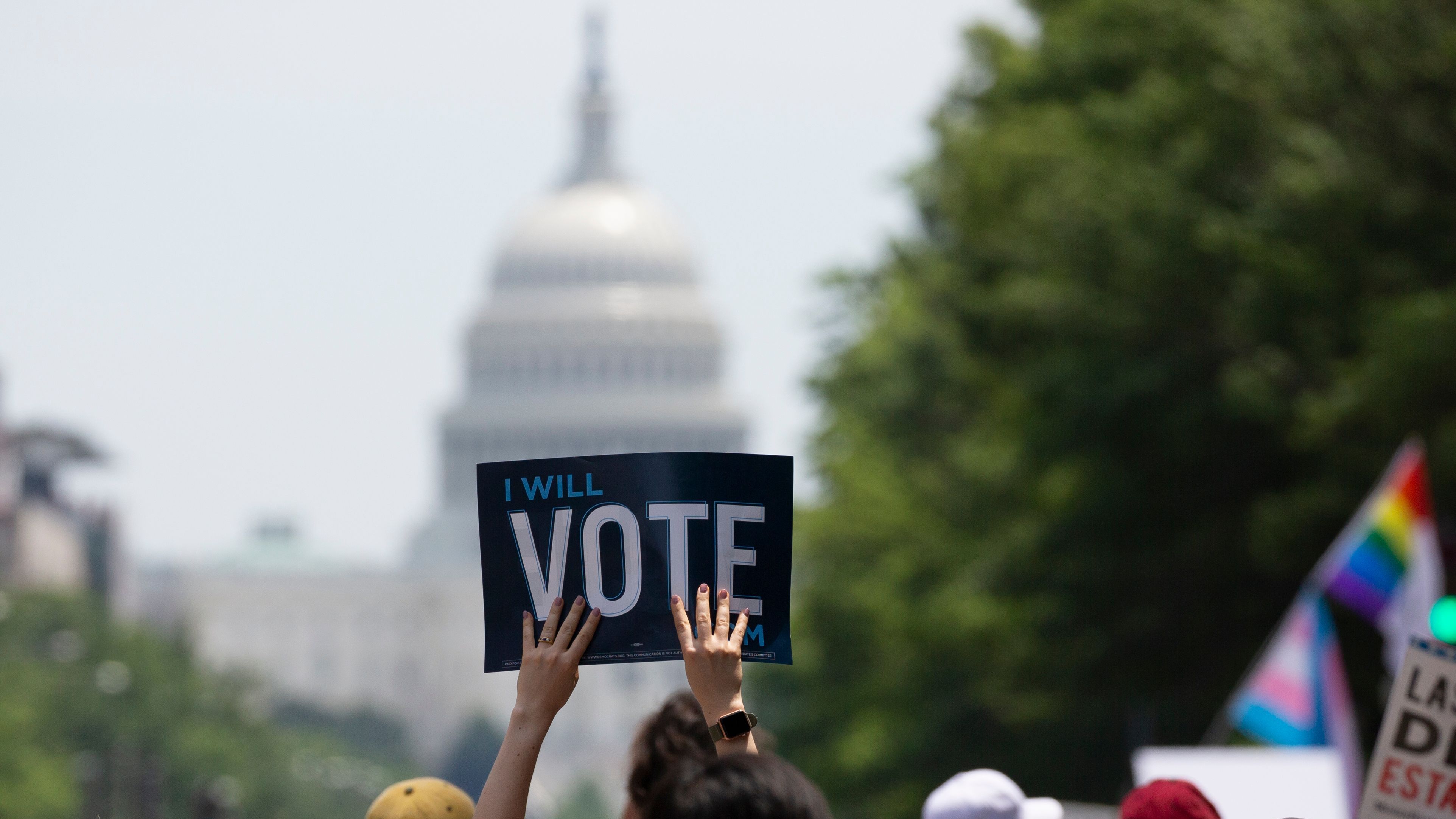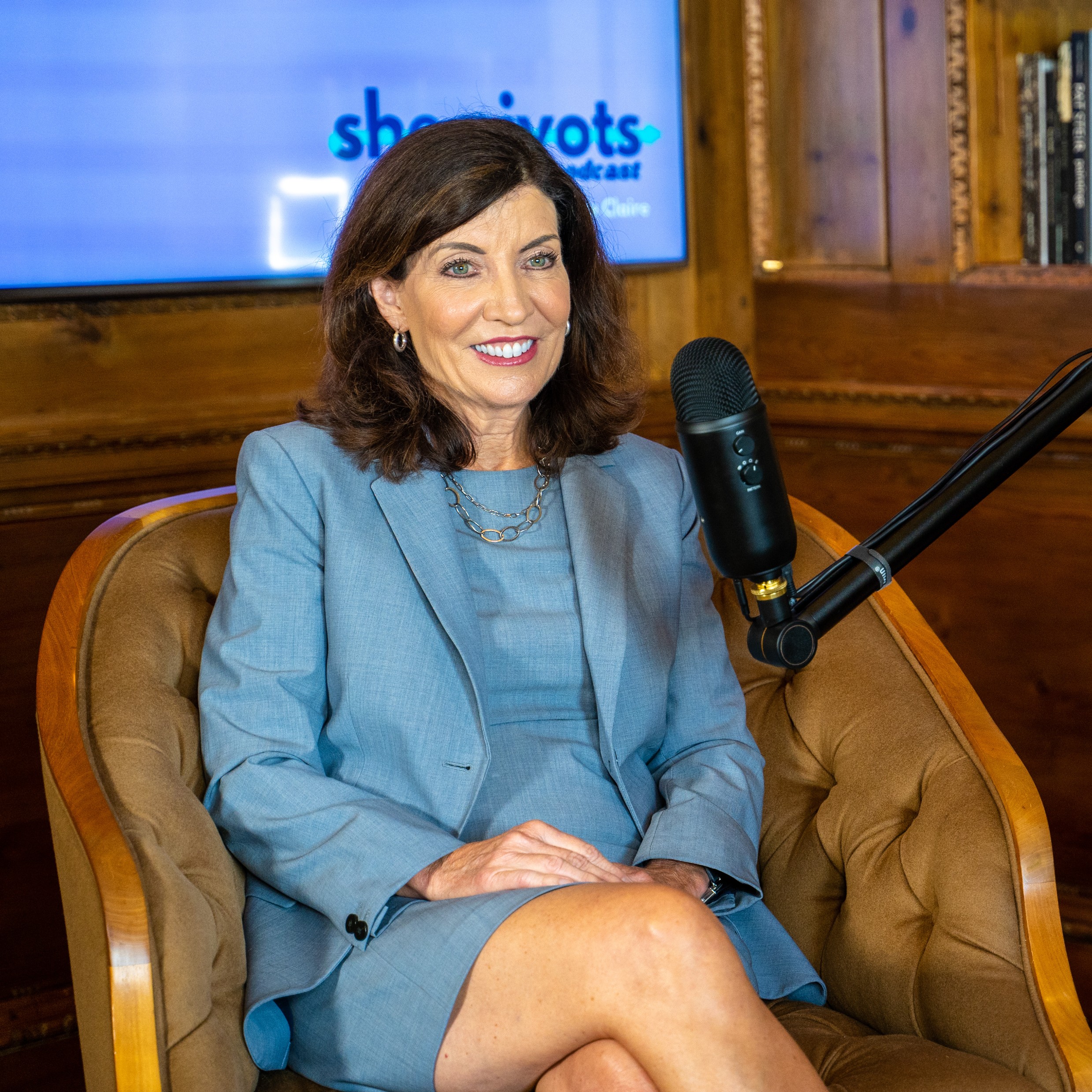If Asian Voter Turnout in the Midterm Elections Is Strong, Everything Could Change
In an election year when we’re constantly being reminded of the importance of voting, Asian-Americans have the chance to fulfill our potential as a \201csleeping political giant." With our booming population and growing presence in strategic battleground states like Nevada, Arizona, and North Carolina, we stand to make a critical difference across the electoral board.

With the midterm elections now less than a week away, I’m issuing a call to my fellow Asian-Americans: Please vote. Whether you’re voting early, by mail, or at the polls on November 6, please just make sure you turn out.
In an election year when we’re constantly being reminded of the importance of voting, Asian-Americans have the chance to fulfill our potential as a “sleeping political giant." With our booming population and growing presence in strategic battleground states like Nevada, Arizona, and North Carolina, we stand to make a critical difference across the electoral board.
From California’s 39th congressional district, where a local Asian population of 28 percent could play a decisive role in a race currently polling at a 50-50 split between the Republican and Democratic candidates, to neighboring Nevada, where the state’s 8.8 percent of Asians help dictate both a surprisingly close Senate race. Depending on how Asian voters choose to vote in these states, we can ultimately either add or subtract from the cumulative total needed to flip the Senate. In other words: Any fraction of Asian voters turning out this year could tip the electoral balance.

Now, if you’ve been following the midterms through the media or online, you’ll likely have already heard the many reasons on why we should vote. There are practical issues of power at stake, including the balance of power in Congress; judicial appointments and pivotal legislation through 2020; and determining who occupies the governors’ mansions and state legislatures that will be in place to vote on redistricting in 2021, following the 2020 Census.
But for the Asian-American community, there’s one additional reason to get to the polls: representation.
Even though Asians have now become the fastest-growing minority group in the United States, our voting turnout has consistently lagged behind those of other groups. In 2012, only 46.9 percent of the nation’s eligible Asian voters turned out to vote, followed by a dismal 27 percent turnout rate in 2014. While the 49.3 percent of nationally eligible Asian voters who went to the polls in 2016 was an improvement, it was still behind the 65.3 percent of white voters and 59.6 percent of black voters who voted that year.
A 2014 Pew Research report further confirms only “three-in-ten Asian-American eligible voters have cast ballots in midterm elections since 1998.” While Asian voters may be registering in record-breaking numbers, with a 130 percent increase between 2006 and 2014, our community’s actual rate of participation often still falls behind.
Stay In The Know
Get exclusive access to fashion and beauty trends, hot-off-the-press celebrity news, and more.
I’ve worked on races where Asian engagement was viewed as an optional effort.
Of course, the lack of turnout isn’t without reason.
The Asian-American community does experience barriers when it comes to voting, particularly around language and accessibility-related issues. With 35 percent of Asian-American adults identifying as having limited English proficiency, the hit-and-miss nature of translated materials (e.g. facsimile ballots) being made available at polls despite a clear provision in the Voting Rights Act, can make it difficult for many to understand and take part in the electoral process.
But even for English-speaking Asian voters, turnout challenges can still be attributed to broader problems within the political framework.
In a post-2016 study conducted by the National Asian American Survey (NAAS), only 29 percent of the 4,393 Asian voters contacted reported any form of communication from a political party. This is a notable contrast from the 44 percent of white voters who similarly reported contact. The overall percentage also showed a 2 percent decrease from the 31 percent of Asian voters who confirmed party-related communication in 2012, when NAAS partnered with two other organizations to conduct a similar survey.

In other words, Asian voters aren’t receiving the same level of engagement from political parties as other groups. This can fuel cycles of non-participation, and ultimately—to borrow a term and a concept from New America—create a corrosive feedback loop.
To put this another way: When political parties neglect to prioritize Asian voters, increased feelings of alienation will likely result in decreased turnout at the polls. With each successive cycle of Asian voters not turning out, campaigns will feel increasingly justified in not utilizing limited resources towards winning the Asian vote. When carried out through successive elections, this corrosive cycle can ultimately lead to many would-be Asian voters feeling ambivalent about participating in a system which doesn’t seem to prioritize them. Hence, turnout problems.
As someone who has worked in politics for most of her adult life, let me first say: I get it.
Being ignored by the political establishment can make for a disheartening experience. When it’s been proven that Asian voters can make up the winning margins in key districts, the continued barriers in terms of voting, and the overall lack of interest or outreach from both political parties, seems to emphasize it’s the political machine which needs to improve, and not the Asian-American community.
I’ve definitely felt disappointed when I’ve worked on races where Asian engagement was viewed as an optional effort to be generated on my own time, versus a campaign-driven endeavor.
But to break free from these negative patterns, there’s only one way forward—and that’s for one side to take a decisive step out of the loop. Given the often glacial nature of our political parties, it’s up to the Asian-American community to make the first move.

If we turn out in record-breaking numbers this election cycle, we’ll be showing both parties and other political stakeholders, Asian-American voters are not a force to be overlooked. A substantive turnout by younger, English-speaking Asian voters, can also help drive attention to the access problems being experienced by our older generations, hopefully enough to change their situation for future cycles.
In other words, the more we turn out, the more we’ll encourage existing politicians and campaign consultants to pay attention to, and invest outreach resources in, our community. Turnout will secure us a seat at the table, and given the projections showing we’ll make up one-tenth of all voters by 2044, isn’t that something we should all want?
The good news is there’s still time for any would-be Asian voter. With early voting having already begun in several states, and absentee ballots arriving daily, resources like the non-partisan Asian and Pacific Islander American Vote are the key to getting started.
Vote to make a difference for our community, and for the nation. Your voice matters.

From explainers to essays, cheat sheets to candidate analysis, we're breaking down exactly what you need to know about this year's midterms. Visit Marie Claire's Midterms Guide for more.
-
 Rihanna Matches Her Canadian Tuxedo to a Denim Dior Tote
Rihanna Matches Her Canadian Tuxedo to a Denim Dior ToteThe superstar accessorized her triple denim outfit with strappy snakeskin heels.
By Amy Mackelden
-
 Jennifer Lopez Trades a Pink Catsuit for a Sparkly Jumpsuit
Jennifer Lopez Trades a Pink Catsuit for a Sparkly JumpsuitThe superstar wore two totally different outfits at the Saudi Arabian Grand Prix.
By Amy Mackelden
-
 PSA: Your Fragrance Horoscope for Taurus Season Did Not Come to Play
PSA: Your Fragrance Horoscope for Taurus Season Did Not Come to PlayWhether you're cocooning or blooming, your scent is written in the stars.
By Aliza Kelly
-
 36 Ways Women Still Aren't Equal to Men
36 Ways Women Still Aren't Equal to MenFeatures It's just one of the many ways women still aren't equal to men.
By Brooke Knappenberger
-
 How New York's First Female Governor Plans to Fight for Women If Reelected
How New York's First Female Governor Plans to Fight for Women If ReelectedKathy Hochul twice came to power because men resigned amid sexual harassment scandals. Here, how she's leading differently.
By Emily Tisch Sussman
-
 Why the 2022 Midterm Elections Are So Critical
Why the 2022 Midterm Elections Are So CriticalAs we blaze through a highly charged midterm election season, Swing Left Executive Director Yasmin Radjy highlights rising stars who are fighting for women’s rights.
By Tanya Benedicto Klich
-
 Tammy Duckworth: 'I’m Mad as Hell' About the Lack of Federal Action on Gun Safety
Tammy Duckworth: 'I’m Mad as Hell' About the Lack of Federal Action on Gun SafetyThe Illinois Senator won't let the memory of the Highland Park shooting just fade away.
By Sen. Tammy Duckworth
-
 Roe Is Gone. We Have to Keep Fighting.
Roe Is Gone. We Have to Keep Fighting.How To Democracy always offers a path forward even when we feel thrust into the past.
By Beth Silvers and Sarah Stewart Holland, hosts of Pantsuit Politics Podcast
-
 The Supreme Court's Mississippi Abortion Rights Case: What to Know
The Supreme Court's Mississippi Abortion Rights Case: What to KnowThe case could threaten Roe v. Wade.
By Megan DiTrolio
-
 Sex Trafficking Victims Are Being Punished. A New Law Could Change That.
Sex Trafficking Victims Are Being Punished. A New Law Could Change That.Victims of sexual abuse are quietly criminalized. Sara's Law protects kids that fight back.
By Dr. Devin J. Buckley and Erin Regan
-
 My Family and I Live in Navajo Nation. We Don't Have Access to Clean Running Water
My Family and I Live in Navajo Nation. We Don't Have Access to Clean Running Water"They say that the United States is one of the wealthiest countries in the world. Why are citizens still living with no access to clean water?"
By Amanda L. As Told To Rachel Epstein